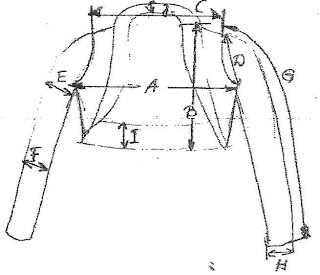Undisputed was the fact that the jacet was novel and had individual character. The plaintiff was the first one to make the design available to the public within the community by selling the jacket shown on the right-hand side.
However, the defendant argued that this does not prove that the plaintiff is the rightful owner of the NRCD.
According to Art. 14 (1) of the council regulation, the he right to the Community design shall vest in the designer or his successor in title. The plaintiff submitted the sketch shown on right hand side together with whitness statemens of employees who authored the sketch in order to prove that the plaintiff - a employer - was the rightful successor in title.
The BGH did not object to the finding of the court of 2nd instance tat essential features of the NRCD - in particular the circuferentially closed broad cuff running from the neck over the back and back to the back - could not be derived from the scetch.
Furhter, the court did not find any support in the council regulation for a legal presumption that the person having been the one to make the design available to the public is the rigtful owner. In the absence of such a legal presumption, the burden of proof is not reversed and remains with the plaintiff, who has to prove to be the rightful owner of the NRCD beyond any reasonable doubt.
The enforcement of NRCDs in Germany will become more complicated after this decision. In order not to loose the possibility to enforce their rights using NRCDs, enterprises should keep a complete documentation of the creation process of products put to the market.

